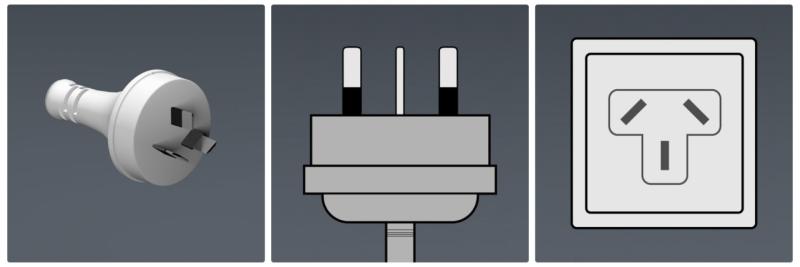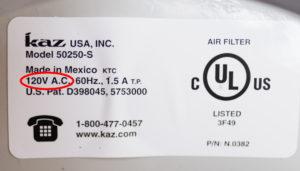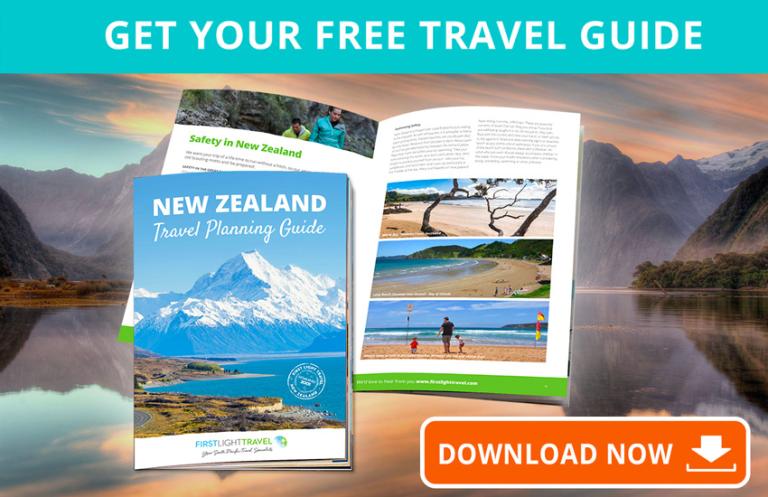New Zealand Power Plug
New Zealand (as well as Australia, China, and several other countries) uses different power plugs to the rest of the world and this power plug is known as Plug Type I. The power plugs have two flat pins in a V-shape with a grounding pin. (looks like a sad face) So thats three flat pins — one of which is an earthing pin (this is simply a safety measure). Some power plugs do not have the earthing pin but they will still fit into the power outlets. While Type I isn’t used in a large number of countries, it does come standard on universal plug adapters.
Countries that use the Plug Type I include....
| American Samoa | Nauru | Timor |
| Argentina | New Zealand | Tonga |
| Australia | Papua New Guinea | Tuvalu |
| China | Saint Vincent | Uruguay |
| Cook Islands | Samoa | Uzbekistan |
| Fiji | Solomon Islands | Vanuatu |
| Kiribati | Tajikistan |
The pins on New Zealand power plugs look something like this...
New Zealand's Electrical Current - Volts/Hertz
Electrical current is supplied domestically throughout New Zealand at 230/240volts, 50 hertz. Most accommodation providers provide a 110 volt ac sockets (rated at 20 watts) for electric razors only.
Be warned: If you try to use 110-volt appliance like an iron, hairdryer or shaver in a 230/240volt plug the high voltage could overheat and destroy the appliance - a power converter is required to use these appliances, but such a device would be the size and weight of a brick and not practical unless.
Thankfully today most low-power devices like laptop and phone chargers power supplies will work on both 110 and 220 volts. Look for a plate or printing on the device, and it will probably say "110-220 volts" (refer to the below image) and therefore the devices need only a plug adaptor. Most motels/hotels will supply a hairdryer.
How to know whether you need a converter or transformer. Check the manufacturer's label (see image below). If the tag has a single voltage number (110 or 120 volts), you do; if you see a combined low/high number (120/240 volts or 100/240 volts) or digits of 200 or higher, you don't. But not all your appliances need converters or transformers before you can use them.
But seriously folks bringing a converter or transformer is just not worth the hassle. If you just absolutely need those curling tongs then they can be bought cheaply at places like The Warehouse/K Mart.
Converters are meant for electrical appliances, and should only be used for a short period (1 to 2 hours). A 50-watt converter will do for small electrical appliances, like (non rechargeable) shavers or toothbrushes, and non-heating appliances. For heating appliances (such as hair dryers, irons, coffee makers and other high-power electrical appliances) you need a 1600-watt converter. To find out which converter you need, check the label on your electrical appliance for its wattage.
Transformers are to be used with all rechargeable appliances (for instance battery rechargers, cell phones, laptops and rechargeable shavers). Again, you’ll only need a transformer if those appliances are designed for another voltage level than the one in use in New Zealand (230V) and are not dual-voltage.
Dual-voltage: Some appliances are dual-voltage, which means they can be used with more than just one voltage level. To check if that’s the case, look for something like this 100-240 Volt ~ 50/60 Hertz on the nameplate of your appliance. And of course don’t forget to switch the voltage level manually before you plug your device into a New Zealand outlet!
NOTE: Laptops and battery rechargers usually come with switch-mode adapters (which means they can switch an AC input (100-240V for example — check the label!) to a DC output (19V for example). They can be plugged right away into a New Zealand outlet with the right power plug.
And what about the frequency: can I use a 60 Hz appliance into a 50 Hz outlet? No, we wouldn’t recommend doing that. Even if the voltage is the same (or if you use a converter/transformer to adjust the voltage), a 60 HZ appliance may not function properly on 50 Hz current. Fortunately, some appliances can operate on either a 50 Hz or 60 Hz system. This has to be stated on the name plate, like: 110-230 Volt ~ 50/60 Hertz.
Tip: Bring a rechargeable power bank or power pack that extends a device's unplugged life (like a phone or camera) by many hours. These can usually be charged from anything that has a USB outlet.
This manufacturer's label indicates that the device can only run on 120 volts so could not be used in New Zealand...
New Zealand power plug adapter
If you plan to travel to New Zealand, you may need a power plug adapter if you plan to bring your own electrical appliance such as a hair dryer, shaver etc. The adapter is essential, regardless of the device. The plastic nub bridges the design divide between one plug and the foreign socket. With it, you can use your three-pronged hair straightener in a two-holed outlet. Without it, you are stuck with curly hair.
If you are going to buy an adapter, be sure to get one with the earthing pin. You can buy adapters at most large airports - try the book shop; luggage shop or even drugstore/pharmacy. They easily obtainable in Auckland, Christchurch or Queenstown Airports. Adapters are sold in myriad of forms. You can purchase singles for a specific country or a multi-destination model.
Tip: If you have a number of devices, bring a multi box from home and then you can plug into your travel adapter so you can charge/run them all at the same time.
Using a New Zealand power adaptor looks something like this...
More articles to help you plan your trip to New Zealand
Getting to New Zealand
New Zealand Passport and Visa Requirements
Smooth as possible on arrival to New Zealand
What is the Best Time to Visit New Zealand?
Doubtful Sound or Milford Sound?
Which New Zealand Glacier to Visit?
Driving in New Zealand
Safety in New Zealand's Great Outdoors
What to Pack for a New Zealand Holiday
New Zealand Accommodation Guide
New Zealand's Need to Know Facts
What do things cost in New Zealand
Since 2001 we’ve been helping visitors plan their dream New Zealand holiday. We aim to make visiting our beautiful land effortless. Let our expert holiday planners put together an itinerary for you, no obligation FREE of charge, or get some friendly advice on what small group tour would suit - Just follow the link and answer a few brief questions.






